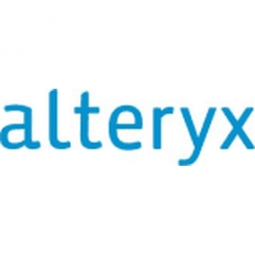Technology Category
- Application Infrastructure & Middleware - Event-Driven Application
- Cybersecurity & Privacy - Security Compliance
Applicable Industries
- Buildings
- Cement
Applicable Functions
- Human Resources
- Quality Assurance
Use Cases
- Building Automation & Control
- Personnel Tracking & Monitoring
About The Customer
Grant Thornton is a global business advisory, tax, and audit firm that identified a market need for payroll assurance services in New Zealand. The firm initially built a model for one of New Zealand’s largest cleaning companies, covering 21,000 employees and 6 billion rows of timesheet data. However, the complexity of the entitlement definition in the Holidays Act made the architecture and model performance challenging. To address these challenges, Grant Thornton collaborated with Mission Intelligence to develop an Alteryx Analytic App that could navigate the constantly changing leave entitlement legislative landscape and be deployed at scale for organizations of all sizes.
The Challenge
Grant Thornton, a global business advisory, tax & audit firm, identified a need for payroll assurance services in New Zealand, where the government has complex and progressive employee entitlement laws. With a workforce of nearly 3 million, tracking and ensuring proper compensation for various leave scenarios is a significant challenge. Since the implementation of these laws in 2003, payment miscalculations, payroll code inconsistencies, and human errors have been prevalent. Grant Thornton initially built a model for one of New Zealand’s largest cleaning companies, covering 21,000 employees and 6 billion rows of timesheet data. However, the complexity of the entitlement definition in the Holidays Act made the architecture and model performance challenging, limiting them to process only one week at a time for each employee over their employment period. The first iteration of the three bespoke models took 3.5 days to accurately process calculations.
The Solution
To address these challenges, Elisha Nuttall, Sr Manager, Consulting at Grant Thornton, and James Martin, Founder of Mission Intelligence, developed an Alteryx Analytic App. This app was designed to navigate the constantly changing leave entitlement legislative landscape without having to rebuild the calculation logic from scratch for each new client. The app had significantly more functionality and flexibility than earlier models, allowing it to be deployed at scale for organizations of all sizes. The innovative app architecture can now recalculate a single employee in seconds, or complete large recalculations of tens of thousands. The app model includes 42 different leave scenarios with 12 different configuration options, providing flexibility and agility to meet various types of employees’ working patterns. The model also includes two additional sublayers for client policy parameters and user configuration for customizability.
Operational Impact
Quantitative Benefit

Case Study missing?
Start adding your own!
Register with your work email and create a new case study profile for your business.
Related Case Studies.

Case Study
System 800xA at Indian Cement Plants
Chettinad Cement recognized that further efficiencies could be achieved in its cement manufacturing process. It looked to investing in comprehensive operational and control technologies to manage and derive productivity and energy efficiency gains from the assets on Line 2, their second plant in India.

Case Study
Energy Saving & Power Monitoring System
Recently a university in Taiwan was experiencing dramatic power usage increases due to its growing number of campus buildings and students. Aiming to analyze their power consumption and increase their power efficiency across 52 buildings, the university wanted to build a power management system utilizing web-based hardware and software. With these goals in mind, they contacted Advantech to help them develop their system and provide them with the means to save energy in the years to come.

Case Study
Intelligent Building Automation System and Energy Saving Solution
One of the most difficult problems facing the world is conserving energy in buildings. However, it is not easy to have a cost-effective solution to reduce energy usage in a building. One solution for saving energy is to implement an intelligent building automation system (BAS) which can be controlled according to its schedule. In Indonesia a large university with a five floor building and 22 classrooms wanted to save the amount of energy being used.

Case Study
Powering Smart Home Automation solutions with IoT for Energy conservation
Many industry leaders that offer Smart Energy Management products & solutions face challenges including:How to build a scalable platform that can automatically scale-up to on-board ‘n’ number of Smart home devicesData security, solution availability, and reliability are the other critical factors to deal withHow to create a robust common IoT platform that handles any kind of smart devicesHow to enable data management capabilities that would help in intelligent decision-making

Case Study
Protecting a Stadium from Hazardous Materials Using IoT2cell's Mobility Platform
There was a need for higher security at the AT&T Stadium during the NFL draft. There was a need to ensure that nuclear radiation material was not smuggled inside the stadium. Hazmat materials could often be missed in a standard checkpoint when gaining entry into a stadium.








